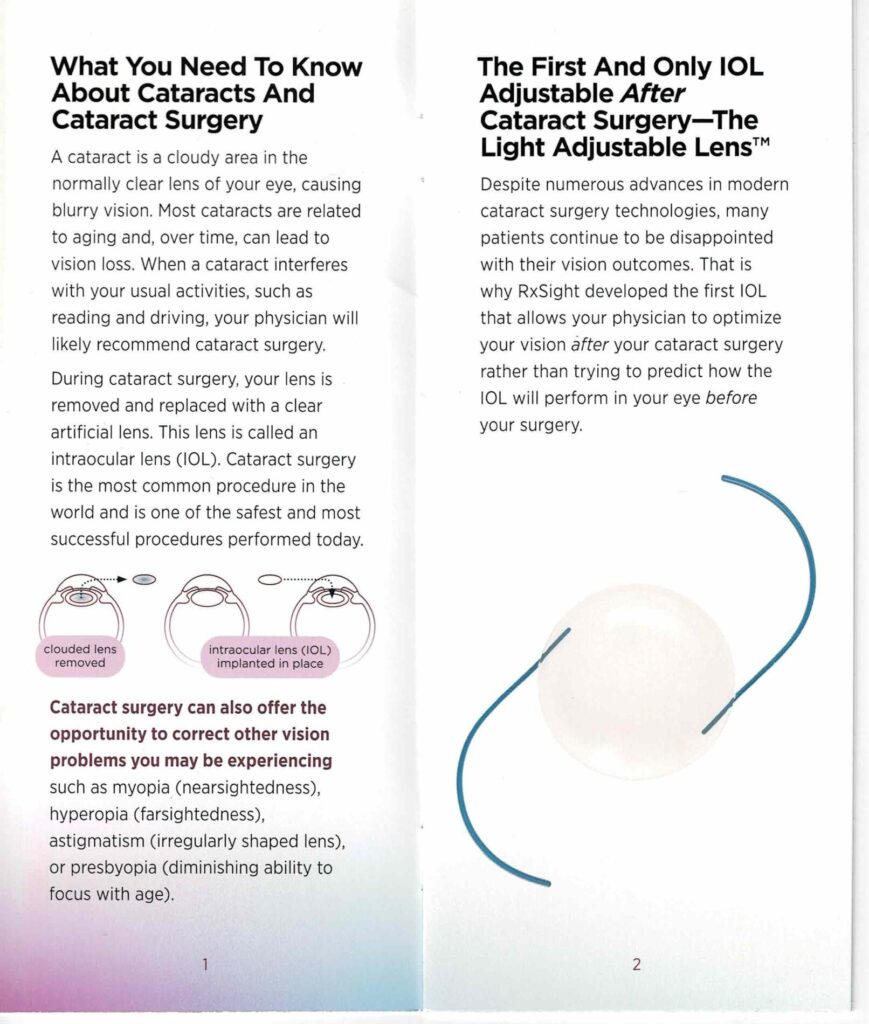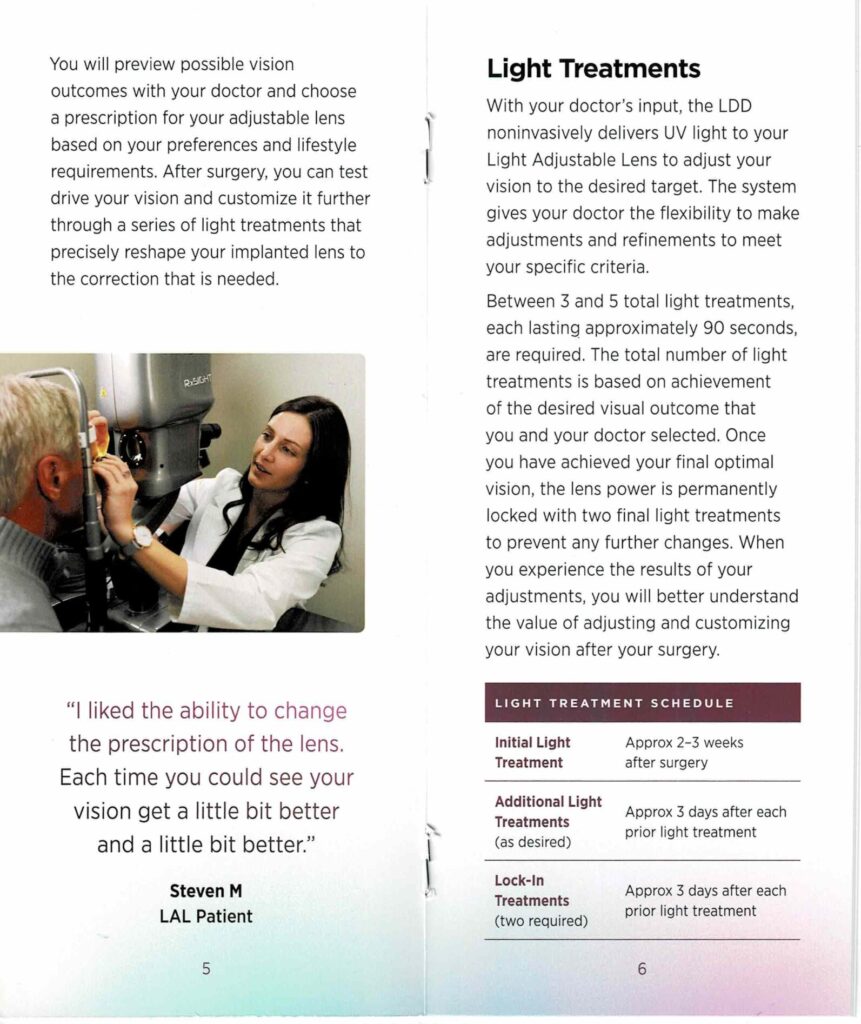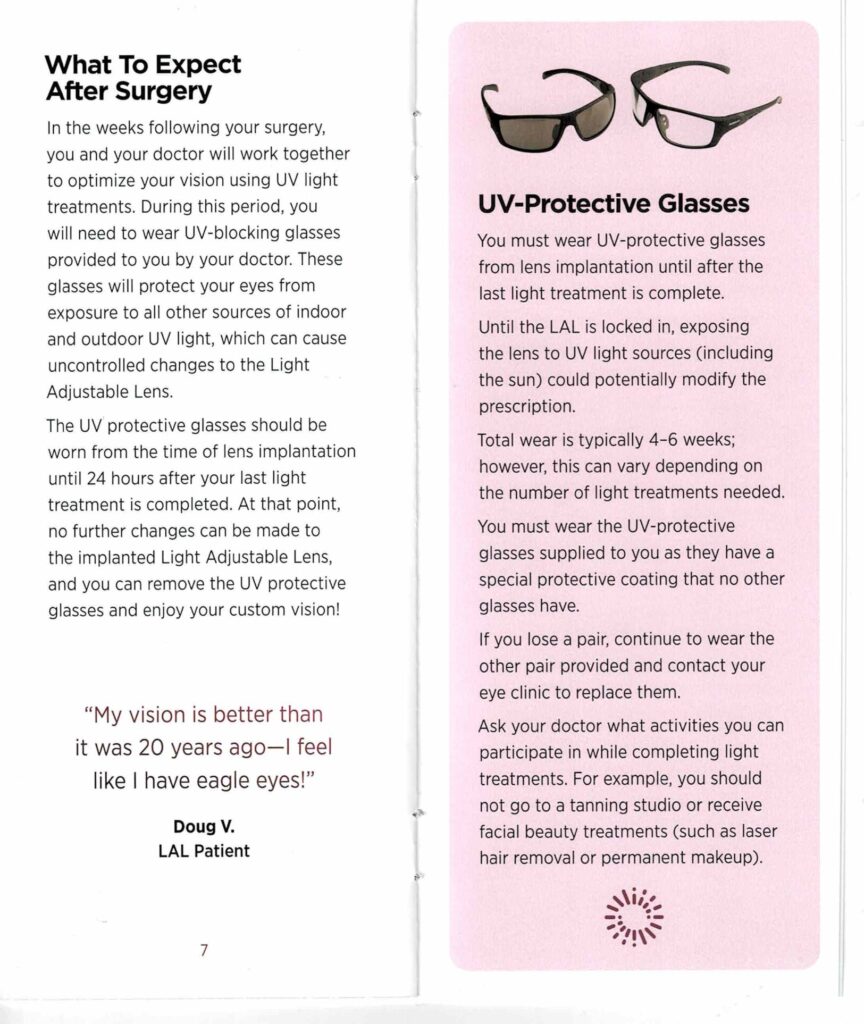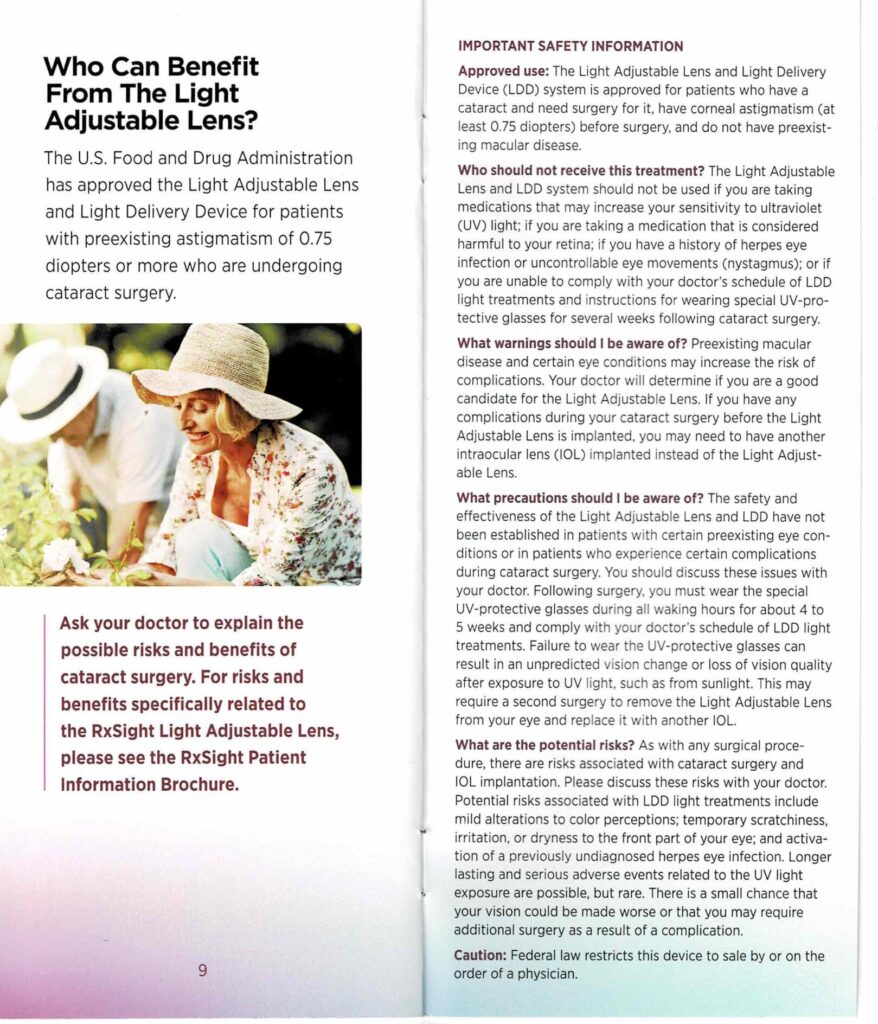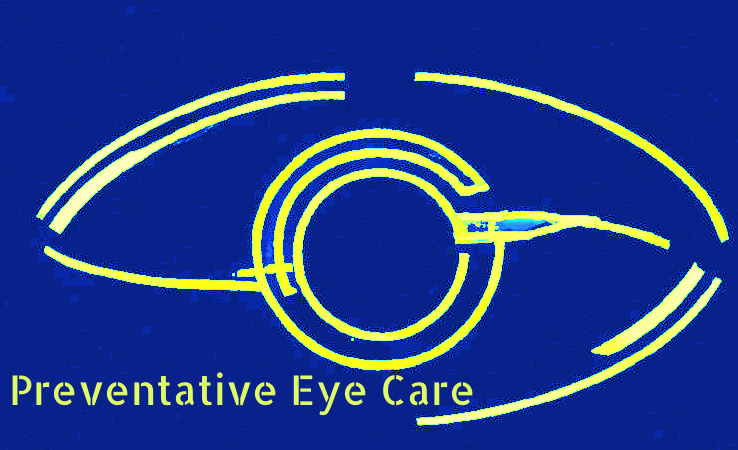Cataracts
Cataracts occur when the normally clear lens in the eye becomes cloudy.
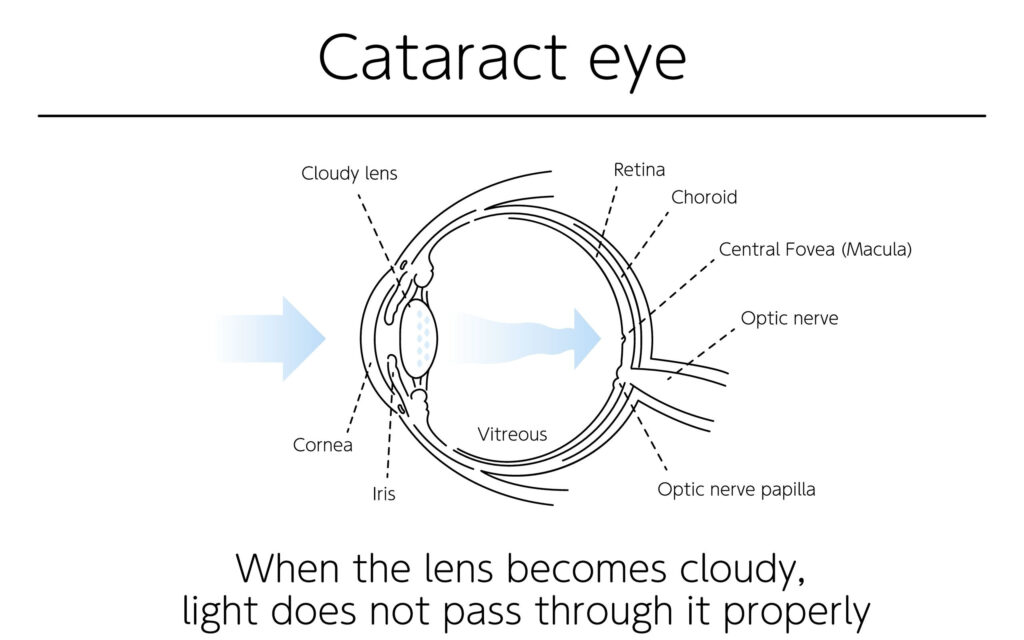
When the lens becomes cloudy, light does not pass through it properly, causing blurred vision, difficulty seeing at night, light sensitivity, glare, seeing starbursts or halos around lights, seeing the world as faded or dimmed or yellow, and feeling like you need brighter than normal light to read or see objects.
Cataracts are usually caused by sun exposure, but diabetes and medications such as steroids use can also contribute.
When you develop cataracts, which usually happens between ages 50-80, you will need cataract surgery to take out your cloudy lens and replace it with a new lens implant.

In 2017, the FDA approved a new lens implant for cataract surgery called the Light Adjustable Lens in which the prescription of the lens implant could be adjusted after surgery with UV light. Before this new implant was developed, patients were basically stuck with whatever vision they were left with after cataract surgery, with no way to adjust the prescription inside their new lens implants. Now, this new Light Adjustable Lens allows patients to test out their vision and change the prescription in their lens implants after cataract surgery to provide the optimal distance and near vision for their visual needs.
Since the Light Adjustable Lens is gaining popularity among cataract surgeons and their patients who seem to really like it, I figured I would write a blog post about it and include this informational brochure for people who need cataract surgery and are not aware that this is an option. For example, my mom, who needs cataract surgery but keeps putting it off because she is an ophthalmologist who is super picky about her vision. I have been trying to convince her to get cataract surgery for years now, ever since she told me she could no longer visit me after dark because she was afraid of driving at night. But she is too scared that her vision isn’t going to come out perfect to get her cataracts taken out. I think the Light Adjustable Lens would be a great option for her because it forces the cataract surgeon to see her 3-5 extra times for light treatments after the surgery to perfect her vision and change the prescription of her lens implant if she is not happy with the original results. No other lens implant requires the cataract surgeon to spend quite as much time with their patients and pay quite as much attention to their visual needs.
